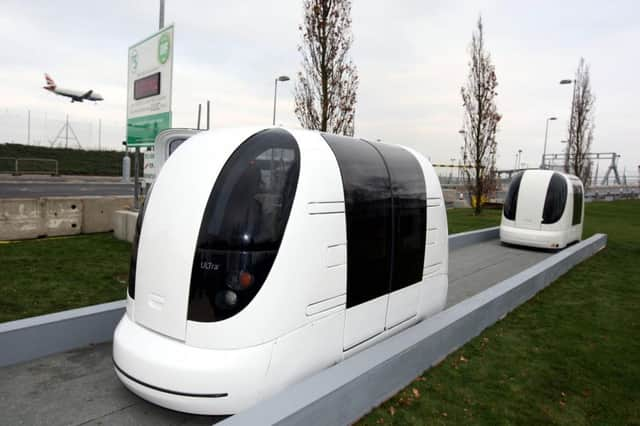Alastair Dalton: Driverless vehicles a benefit but not a panacea


Trials started in London more than three years ago and companies worldwide are racing to develop the technology. Nobody knows yet how quickly such transport will take off, and what impact it will have, but early versions have become firmly established, with 3.5 million people using automated ”pods” to take them two miles between Heathrow Airport’s terminal five and a car park two miles away since they were launched seven years ago.
The trials have included autonomous vehicles delivering shopping to people’s homes in Greenwich, where residents have also tried out a self-driving shuttle service.
Advertisement
Hide AdAdvertisement
Hide AdExisting cars are moving towards greater autonomy, with manufacturers such as Tesla offering “driver assistance” systems such as Autopilot, which, unnervingly, as I’ve found myself, enables the car to change lane for you just by pushing the indicator switch.
This week, the UK Government signalled the latest advance by announcing drivers will be permitted to remotely park their cars on roads using a mobile phone from next month. Technology already allows owners to move their vehicles out of the garage or along their driveway with a mobile app.
Scotland was not included in the trials such as Greenwich announced by UK ministers, who regulate the technology.
But the Scottish Government is keen not to be left behind, and a debate in the Scottish Parliament in March led to transport minister Humza Yousaf inviting MSPs to an autonomous vehicle “demonstration summit” planned for later this year.
He indicated it would be the launchpad for a trial, which could involve delivery vehicles.
Experts believe Scotland presents specific challenges – and opportunities – for the development of driverless vehicles because of its unique characteristics.
Although the country is relatively highly urbanised, with all seven of its cities soon to be connected by motorway or dual carriageway, its rural population is scattered over a large area.
Dr Neale Kinnear, principal psychologist at TRL – the former Transport Research Laboratory – said automated vehicles could play a significant role in connecting rural communities.
Advertisement
Hide AdAdvertisement
Hide AdThat makes a Scottish trial vital. One could perhaps combine urban and rural travel, such as in areas within commuting distance of our cities that are poorly served by public transport and consequently car-dominated.
However, there is a big danger of becoming obsessed with electric autonomous vehicles as a panacea for our transport ills.
They may cut pollution and improve safety, but they are still boxes on wheels.
So you might feel more virtuous sitting in a non-polluting vehicle, but it is likely to take up just as much road space as your previous car, both when moving and parked, and you will be no healthier than when you used to “drive” (rather than walk/cycle/travel by bus or train).
In fact, the expected sheer convenience of autonomous vehicles, which you may be able to summon at a few minutes’ notice, has led some to predict the number of trips we make by vehicle will actually increase.
That could leave us like the space station inhabitants in the Pixar film WALL-E, who have to be transported around because their muscles have wasted away due to inactivity. Then we’d be just a slave to the automation.
